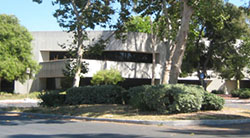
Less than 7 percent of U.S. students participated in gifted education programs in 2014, according to federal civil rights data for that year. Not much has changed since then.
The low numbers partially reflect the different criteria used by states to identify students as gifted or talented. But it also reflects the lack of commitment on the part of many states to support gifted children.
The data was based on state-reported numbers to the U.S. Department of Education for K-12 public schools, although gifted programs tended to focus on grades 3-8.
In 2015, the 2014-2015 State of the States in Gifted Education Survey and Report, conducted by the National Association for Gifted Children (NAGC) in collaboration with the Council of State Directors of Programs for the Gifted (CSDPG), observed 42 states to identify and/or serve the needs of gifted learners; thus, out of the 42 states:
23 states required gifted education strategies aligned with special education, especially free appropriate public education, non-discriminatory testing, dispute resolution, and due process. Fewer states required other strategies from special education, such as individual education plans for gifted students, Child Find, mediation, least restrictive environment and related services.
Furthermore, oversight of those programs was minimal, ranging from audits and accountability report cards to basic program reports – or nothing at all.
There’s a great disparity among the states offering gifted programs in their schools, ranging from 1 percent in Rhode Island to 90 percent in Virginia, the top-rated state for having gifted programs. Although California does not mandate gifted programs, it provides 60.7 percent of the education population with gifted programs, partially funded by the state.
In all U.S. schools that do have gifted education, black and Latino students and students who are English–language learners are much less likely to be included in the programs than white or Asian students.
California’s Definition of “Gifted and Talented” Individuals
California has a set of criteria for identifying pupils as gifted and talented. The categories define students’ capabilities compared with chronological peers. Identification categories may include one or more of the following:
Intellectual Ability
Students who demonstrate extraordinary general intellectual development, in relation to their chronological peers.
Creative Ability
Students who perceive unusual relationships among his or her environment and among ideas; overcome obstacles to thinking and doing; and/or produce unique solutions to problems.
Specific Academic Ability
Students who consistently function at highly advanced academic levels in specific subject areas, particularly in either English Language Arts & Literacy/Reading, English, or Mathematics.
Leadership Ability
Students who exhibit behavior characteristics of extraordinary leadership; possess confidence and knowledge; influence others effectively; display problem-solving and decision making skills; express ideas in oral or written form clearly; show sense of purpose and direction.
High Achievement
Students who consistently produce advanced ideas and/or attain exceptionally high scores on achievement tests.
Ability in Performing Arts and/or Visual Arts
Students who originate, produce, perform, or respond at extraordinarily high levels in the arts.
Other California Ed Code Categories
Any other criterion which meet standards set forth by the California State Board of Education.
To comply with a new education law, the Every Student Succeeds Act (ESSA), the state of California and its school districts are now required to report the number of students performing at an advanced level along with advanced-achievement data for defined student groups. This is an attempt to identify high performers and goes beyond those students typically identified as being “proficient” in some way.
Every Student Succeeds Act (ESSA)
The ESSA was signed into law in December of 2015 and it re-authorizes an earlier law, the Elementary and Secondary Education Act (ESEA), that represented the nation’s commitment to equal opportunity for all students – including gifted ones.
ESSA is really a new version of the No Child Left Behind (NCLB) Act that was enacted in 2002 to shed light on how students were doing and what they needed, regardless of race, income, location, disability, home language, or background.
The new law builds on areas of progress in recent years and will lead to more opportunities for California gifted students. Across the country, high school graduation rates are higher than in past years, dropout rates are lower, and more students are going to college.
Support for education has come from teachers and other educators, parents, community organizations, colleges, corporations, philanthropic organizations, and students themselves. As part of this growing base of support, the educational community is becoming more aware of the need for gifted and talented programs.
ESSA should help promote gifted and talented students. For example, it requires that students be taught to high academic standards that will prepare them to succeed in careers and in college.
The law provides that vital information isgiven to educators, families, students, and communities through annual statewide assessments that measure student progress toward those high standards.
The law also supports the growth of innovation through the local involvement of leaders and educators. And it supports accountability to effect positive change in low-performing schoolsand where graduation rates are low over extended periods of time.
California Association for the Gifted (CAG)
The California Association for the Gifted (CAG) is an organization, founded in 1961, of educators, parents, and community members who support giftedness in the state’s schools.
CAG believes that giftedness can, and should, be identified in the state’s school (preschool through 12th grade) population. Giftedness includes diverse academic, social, and emotional characteristics and they should be accounted for in school instruction and curriculum practices.
The organization is involved in several levels including local, state, national, and international, implementing training on aspects of differentiated learning and support for gifted learners. It awards a Certificate of Completion for several of its programs that can be used for credit.
CAG offers an annual conference, summer institutes, seminars, and regional events as well as information projects and a “5-Star Award” program.
Through its programs and through periodic legislative updates, CAG members are informed of legislative rulings that are – or will be – issued by the California Department of Education (CDE) affecting gifted students. CAG works with the CDE to address trends in gifted curricula as well as standards and accountability for educators.
California has gifted curricula standards expressed through the Gifted and Talented Education (GATE) Program. GATE standards specify that all gifted and talented educators be properly trained to best meet gifted students’ unique learning needs.
Although individual school districts can determine how to meet those requirements, many of them look to CAG as a model of quality training.
Growing Opportunities for Gifted Students
California is starting to recognize the importance of having programs and opportunities designed specifically for gifted students. But it has a long way to go.
As more programs are created and more funding made available over time, there are new resources being made available all the time to increase the availability of offerings to further the talent and skills of these students.
Through statewide organizations like CAG and local organizations, such as Orange County Council for Gifted and Talented Education (OCC GATE), accessibility to gifted programs will continue to grow.




